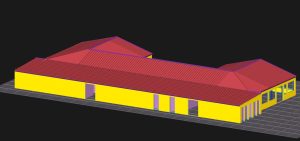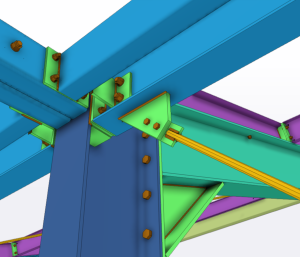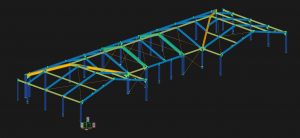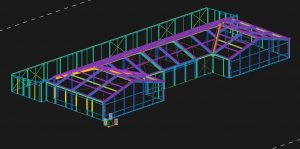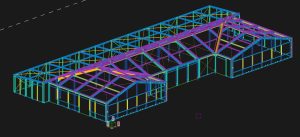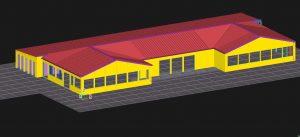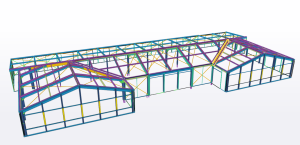Strandpaviljoen Zandvoort
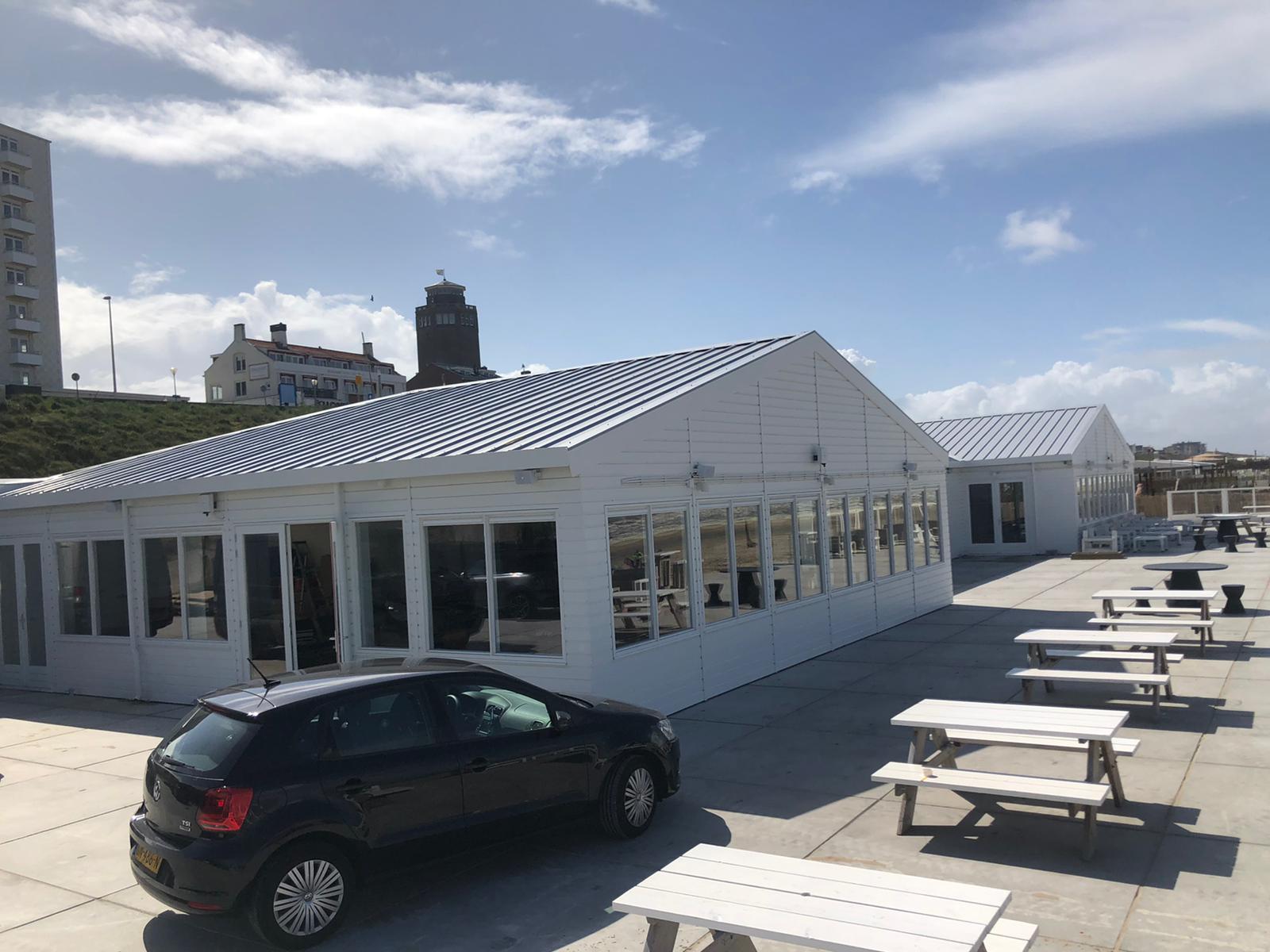
| Kategorie | Kommerzielle Projekte |
|---|---|
| Jahr | 2020 |
| Land | Benelux |
| Organisation | SAS bv |
| Verfasser | Jeroen Houtsma |
| Mitverfasser | Jeffrey van Look (bouwkundig) en Dirk Blaauboer |
| Auftraggeber | Tesco Projectrealisatie / Corendon |
| Ort des Bauwerkes | Zandvoort |
| Tags |
Eind december 2019 kregen wij de opdracht om het strandpaviljoen te ontwerpen met als eis dat begin april 2020 de sleutel overhandigd moet worden om tijdig open te kunnen zijn voor de Grandprix. Helaas kon de Grandprix niet doorgaan, maar de bouw is niet stilgelegd en begin april 2020 heeft Corendon de sleutel ontvangen en is men verder gegaan met de afbouw binnen.
SASbv heeft het volledige traject uitgevoerd van bouwkundig ontwerp tot aan de productietekeningen van de staalconstructie. Door de hoge mate van uitwisselbaarheid binnen Tekla konden de gegevens makkelijk en snel uitgewisseld worden tussen de verschillende disciplines van het proces en hebben we de korte doorlooptijd kunnen behalen. Modellen uitwisselen met IFC en hergebruiken van gegevens hebben ons hierbij heel goed geholpen.
Een van de leuke uitdagingen in dit project was toch wel dat het paviljoen in elementen opgebouwd moest worden. De elementen zijn voorzien van binnen- en buitenplaat zodat een modulair systeem ontstaat dat zeer snel opgebouwd kan worden, maar ook weer eenvoudig afgebroken en opgeslagen kan worden. Hier is Tekla ons goed van pas gekomen, omdat alles met dezelfde software uitgewerkt kon worden.
At the end of 2019 we received a go on the design of the beach pavilion. The customer needed the pavilion to be ready at the start of april 2020 in order to be serving customers at the Grandprix of Zandvoort. Unfortunately the Grandprix was canceled due to COVID-19, but the construction work continued and we were able to meet the requested date. Because SASbv was responsible for the complete design of the pavilion we were able to re-use most of the data and used the interoperability of Tekla. Importing data through IFC between the different stages of the design proces made it possible to meet the required time schedule.
One of the challenges was that the pavilion needed to be modular so that it would be easy to erect at the start of the beach season and quickly disassembled at the end of the season. The modular parts were created with the outer and inner siding attached, so that when the modules are erected the whole structures is wind and water proof. This is the part where Tekla was of great use, since all disciplines could be executed in one software package.



